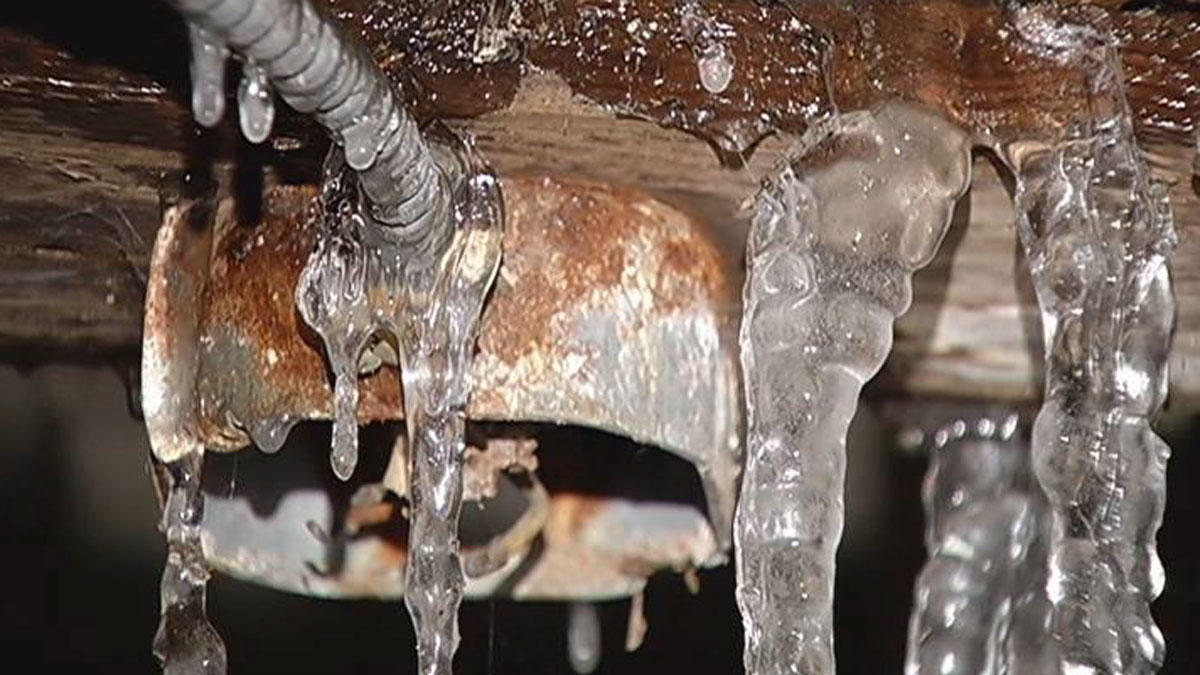Preventing Frozen Pipes: Top Tips for Cold Weather
Preventing Frozen Pipes: Top Tips for Cold Weather
Blog Article
This great article below in relation to How To Avoid Freezing Pipes is totally enjoyable. You should investigate it.

Winter can ruin your plumbing, particularly by freezing pipes. Right here's exactly how to prevent it from occurring and what to do if it does.
Introduction
As temperature levels decrease, the threat of frozen pipelines boosts, possibly resulting in costly fixings and water damages. Recognizing just how to stop frozen pipelines is important for house owners in cool environments.
Comprehending Frozen Pipelines
What triggers pipes to ice up?
Pipelines ice up when subjected to temperature levels listed below 32 ° F (0 ° C) for extended periods. As water inside the pipelines ices up, it increases, taxing the pipe walls and potentially causing them to break.
Dangers and problems
Frozen pipelines can cause water system disturbances, property damage, and expensive repairs. Ruptured pipes can flood homes and cause considerable architectural damage.
Indications of Frozen Water Lines
Determining icy pipes early can stop them from bursting.
Exactly how to recognize icy pipelines
Seek decreased water flow from faucets, uncommon smells or sounds from pipelines, and visible frost on revealed pipelines.
Prevention Tips
Insulating prone pipelines
Cover pipes in insulation sleeves or use warm tape to shield them from freezing temperatures. Focus on pipelines in unheated or exterior areas of the home.
Home heating techniques
Maintain indoor areas effectively heated up, specifically areas with pipes. Open cabinet doors to enable cozy air to circulate around pipes under sinks.
Shielding Exterior Pipes
Garden hose pipes and outdoor faucets
Disconnect and drain yard tubes before winter months. Mount frost-proof spigots or cover exterior taps with insulated caps.
What to Do If Your Pipes Freeze
Immediate actions to take
If you believe frozen pipes, keep faucets open up to soothe stress as the ice melts. Utilize a hairdryer or towels taken in warm water to thaw pipes slowly.
Long-Term Solutions
Architectural changes
Consider rerouting pipes away from exterior walls or unheated areas. Add extra insulation to attics, basements, and crawl spaces.
Upgrading insulation
Buy top notch insulation for pipelines, attic rooms, and walls. Proper insulation assists keep regular temperatures and minimizes the danger of icy pipes.
Final thought
Avoiding icy pipelines needs positive steps and fast reactions. By comprehending the reasons, signs, and safety nets, home owners can safeguard their plumbing throughout cold weather.
6 Proven Ways to Prevent Frozen Pipes and Protect Your Home
Disconnect and Drain Garden Hoses
Before winter arrives, start by disconnecting your garden hoses and draining any remaining water. Close the shut-off valves that supply outdoor hose bibs and leave the outdoor faucet open to allow any residual water to drain. For extra protection, consider using faucet covers throughout the colder months. It’s also important to drain water from any sprinkler supply lines following the manufacturer’s directions.
Insulate Exposed Pipes
Insulating your pipes is an effective way to prevent freezing. Pipe insulation is readily available at home improvement stores and is relatively inexpensive. Pay close attention to pipes in unheated areas such as the attic, basement, crawl spaces, or garage. Apply foam insulation generously to create a buffer against the cold. You can also wrap your pipes in heat tape or thermostat-controlled heat cables for added warmth.
Seal Air Leaks
Inspect your home for any cracks or openings that could let in cold air. Seal any holes around the piping in interior or exterior walls, as well as the sill plates where your home rests on its foundation. Additionally, make sure to keep your garage door closed unless you’re entering or exiting. Leaving it open creates a significant air leak that can lead to frozen pipes.
Allow Warm Air Circulation
During cold snaps, it’s essential to allow warm air to circulate evenly throughout your home. Leave interior doors ajar to promote better airflow. Open kitchen and bathroom cabinets to help distribute heat consistently around the rooms. If you have small children or pets, be sure to remove any household chemicals or potentially harmful cleaners from open cabinets for safety.
Let Faucets Drip
A small trickle of water can make a big difference in preventing ice formation inside your pipes. When temperatures drop significantly, start a drip of water from all faucets served by exposed pipes. This continuous flow helps prevent the water from freezing. Additionally, running a few faucets slightly can relieve pressure inside the pipes, reducing the chances of a rupture if the water inside does freeze.
https://choateshvac.com/6-proven-ways-to-prevent-frozen-pipes-and-protect-your-home/

We had been guided to that write-up about How To Avoid Freezing Pipes from someone on our other domain. Are you aware of somebody who is fascinated with the subject? Be sure share it. Thank-you for your time spent reading it.
This Resource Report this page